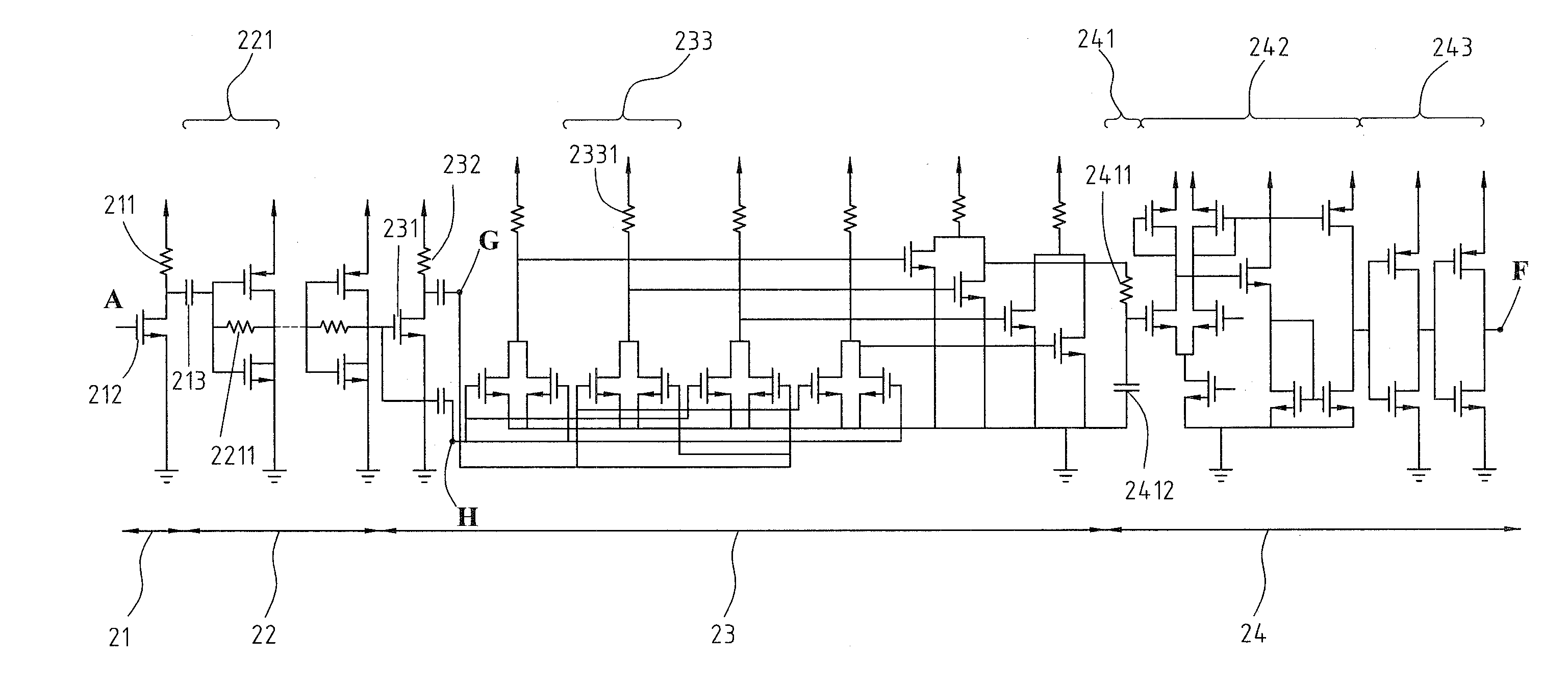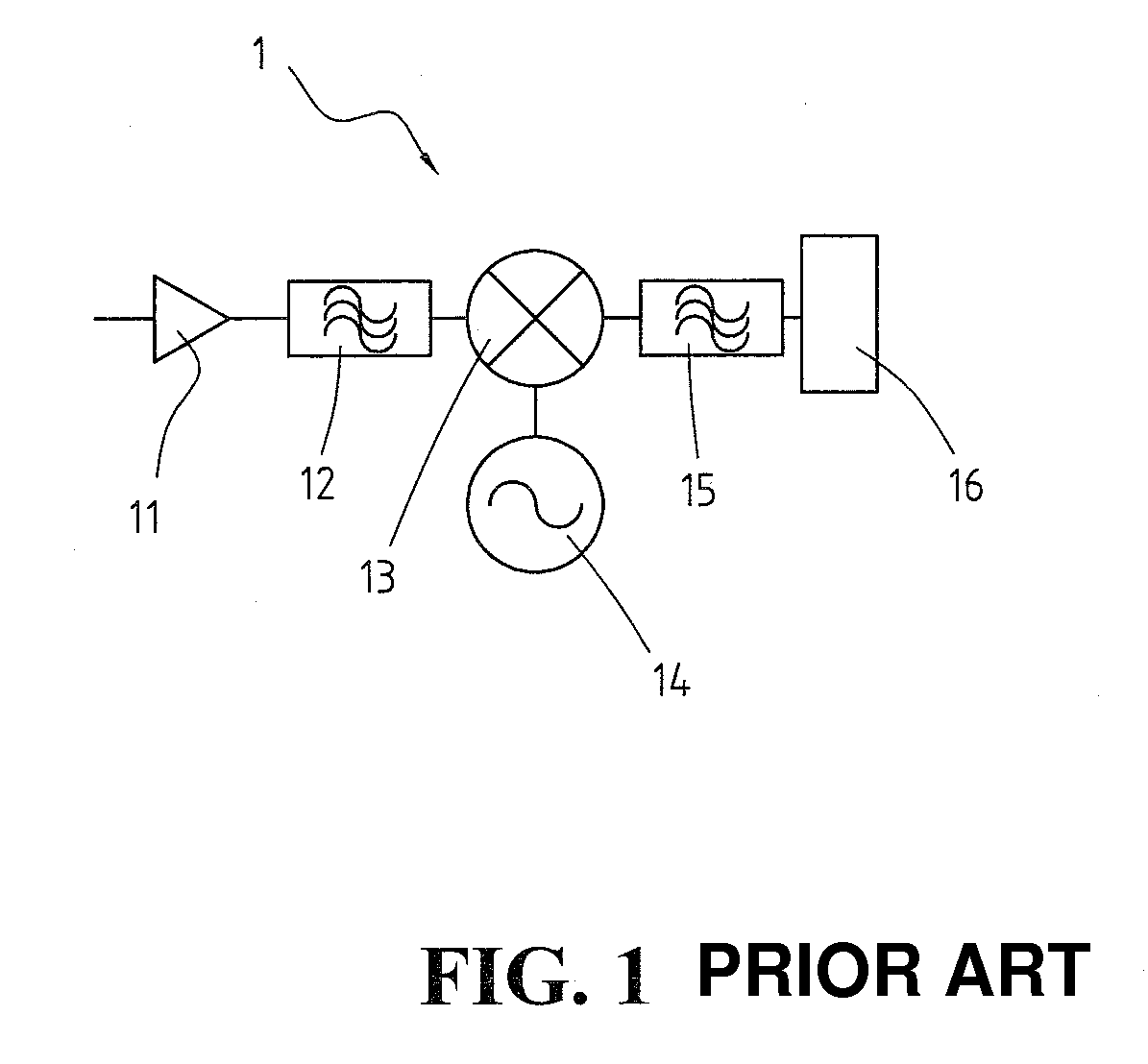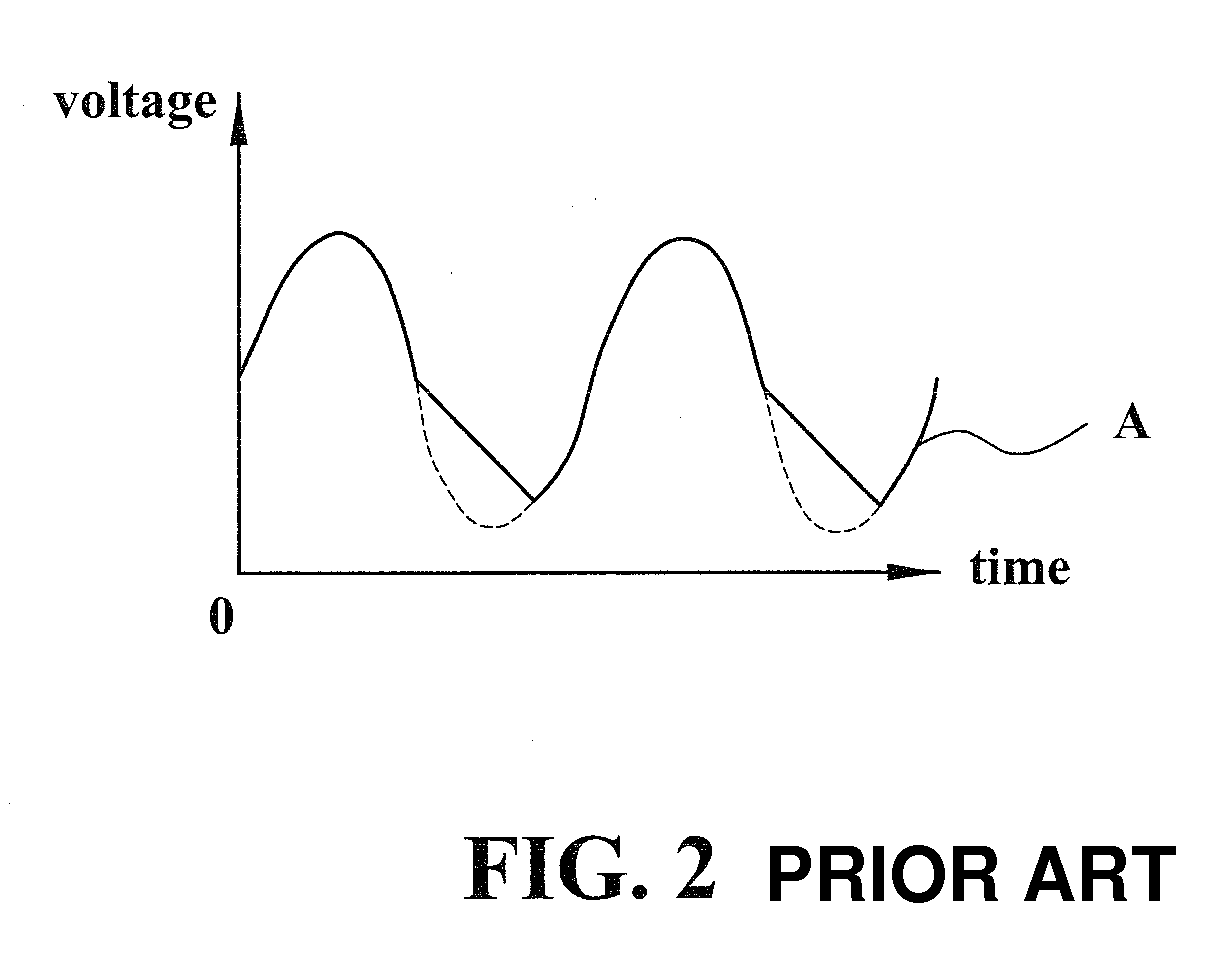Self-mixing Receiver and Forming Method Thereof
a receiver and self-mixing technology, applied in the field of receivers, can solve the problems of low and achieve the effect of reducing the amount of used inductors, lowering the required circuit area and power dissipation
- Summary
- Abstract
- Description
- Claims
- Application Information
AI Technical Summary
Benefits of technology
Problems solved by technology
Method used
Image
Examples
Embodiment Construction
[0027]FIG. 3 illustrated the formation of the self-mixing receiver. As shown in FIG. 3, the self-mixing receiver is a four-cascaded stage architecture to receive electric signals and transmit digital signals. The circuit structure of the self-mixing receiver 2 comprises a high input impedance voltage amplifier 21, a multi-stage amplifier 22, a mixer 23, and a digital output converter 24, wherein the high input impedance voltage amplifier 21 including an input end utilized to be the electric signal receiving terminal B of self-mixing receiver 2. Additionally, the multi-stage amplifier 22 is connected to the output end of high input impedance voltage amplifier 21, and the mixer 23 is connected to the output end C of multi-stage amplifier 22. Besides, the digital output converter 24, connected to the output end D of mixer 23, includes a low pass filter 241, a voltage comparator 242, and a digital inverter 243, wherein the positive input end of voltage comparator 242 connected to the ou...
PUM
 Login to View More
Login to View More Abstract
Description
Claims
Application Information
 Login to View More
Login to View More - R&D
- Intellectual Property
- Life Sciences
- Materials
- Tech Scout
- Unparalleled Data Quality
- Higher Quality Content
- 60% Fewer Hallucinations
Browse by: Latest US Patents, China's latest patents, Technical Efficacy Thesaurus, Application Domain, Technology Topic, Popular Technical Reports.
© 2025 PatSnap. All rights reserved.Legal|Privacy policy|Modern Slavery Act Transparency Statement|Sitemap|About US| Contact US: help@patsnap.com



